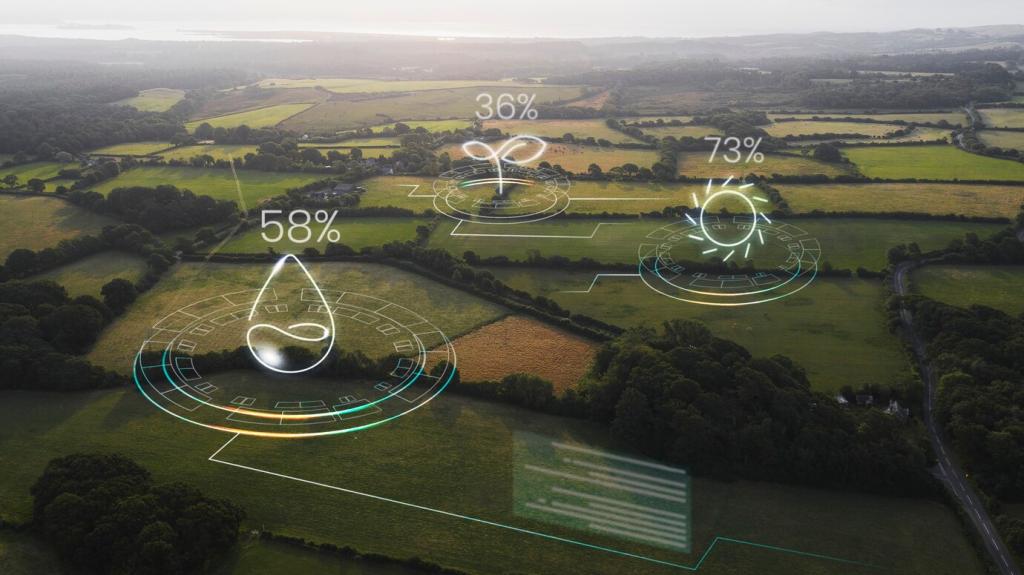
Renewable Energy Technologies and Their Ecological Benefits
Renewable energy technologies represent a transformative shift in the way humanity generates and consumes power. By harnessing nature’s inexhaustible sources—such as sunlight, wind, water, geothermal heat, and biological processes—these innovations promise a cleaner, more sustainable future. Investing in renewable energy not only addresses the growing concern over climate change and resource depletion but also directly nurtures ecological health and community well-being. This page explores the principal renewable technologies and highlights their unique ecological contributions, underlining why their global adoption is key to securing a harmonious relationship between human progress and the natural world.

Harnessing Clean Sunlight
Photovoltaic panels convert sunlight directly into electricity, a process that releases no greenhouse gas emissions, air pollutants, or toxic byproducts. Because solar installations can be placed on rooftops and unused land, they have minimal impact on natural habitats when thoughtfully sited. Widespread adoption of solar energy significantly limits the emissions that contribute to smog, respiratory ailments, and climate change, making it a cornerstone of a healthier environment.

Solar Farms and Land Conservation
Utility-scale solar farms are often scrutinized for their land use, but with careful planning, they can coexist with agriculture and wildlife. Approaches such as “agrivoltaics”—where crops are cultivated beneath panels—demonstrate that solar farms can support biodiversity and soil health. These systems decrease evaporation rates and provide shade, helping preserve water and maintain more resilient agricultural systems alongside renewable electricity generation.
Wind Energy and Its Green Footprint
01
Emission-Free Power Generation
Wind energy produces electricity without burning fossil fuels or emitting pollutants. Modern wind turbines generate power using only clean, renewable wind currents, creating virtually zero greenhouse gases or particulate emissions. By supplanting coal, oil, and gas plants, wind farms directly contribute to improved air quality and the mitigation of health issues associated with smog and industrial pollution.
02
Preserving Land and Wildlife
While wind towers occupy space, their physical footprint is relatively small compared to the area of land over which wind farms are sited. This allows farming, grazing, and habitat functions to continue under and around turbines. New technologies like radar detection and strategic siting policies help mitigate bird and bat collisions, ensuring wind farms can operate with consideration for local wildlife and ecosystems.
03
Supporting After-Use Land Restoration
Wind projects are designed for simple decommissioning at the end of their service life. Infrastructure can be removed, and the land rehabilitated to its pre-installation state or adapted for new uses. This ability to fully restore natural landscapes means that wind energy development does not permanently displace biodiversity or diminish the ecological integrity of sites, helping maintain long-term environmental balance.

Modern hydropower operations increasingly rely on run-of-river and low-impact designs that avoid large-scale dams and reservoirs. These projects preserve natural river flows, reducing disruption to aquatic habitats and wildlife migration patterns. Such advances support biodiversity and protect water quality, ensuring sustainable electricity generation and healthier waterways.

One ecological concern of traditional hydropower is blocking the movement of migratory fish. Today, technologies like fish ladders, bypass systems, and fish-friendly turbines help address this challenge by allowing native species to navigate safely past infrastructure. These measures restore ecosystem connectivity and promote the resilience of aquatic populations, underscoring hydropower’s adaptability.

Large reservoirs can lead to water loss through evaporation and other unintended consequences. Newer small-scale hydropower projects are designed to minimize these effects, ensuring that water remains available for community and ecological needs. This careful management supports freshwater conservation, balances human consumption with environmental priorities, and bolsters drought resilience.
Geothermal Energy and Ground-Level Benefits
Low Emissions and Minimal Land Use
Geothermal plants occupy comparatively small areas and produce far fewer emissions than fossil fuel counterparts. Through a closed-loop process, these plants recycle water and release only trace amounts of gases. The limited footprint preserves much of the surrounding land for wildlife, agriculture, or recreation, keeping the area’s ecological functions largely intact.
Sustainable Resource Management
The heat withdrawn from the ground is naturally replenished, and current best practices ensure that extraction rates do not exceed the natural recharge. Advances in technology, such as enhanced geothermal systems (EGS), are expanding potential sites and maximizing safety. Proper site management and monitoring safeguard underground aquifers and prevent land subsidence, fostering responsible development.
Protecting Air and Water Quality
Unlike some fossil fuel operations, geothermal plants do not emit sulphur dioxide, nitrogen oxides, or particulates into the atmosphere. Water used in these systems is often re-injected underground, rather than being discharged to surface waters. These practices greatly reduce water contamination risks, protect downstream habitats, and support the overall health of local communities and ecosystems.
Carbon Neutrality and Biomass
As plants grow, they absorb carbon dioxide through photosynthesis. When biomass is used as fuel, it releases this stored carbon back into the atmosphere, creating a closed carbon loop when balanced with replanting and land management. This process helps stabilize atmospheric CO₂ levels, providing a renewable energy source that aligns with global climate goals if applied responsibly.
Reducing Landfill Waste
Biomass technologies transform organic waste and agricultural byproducts into valuable fuel, diverting them from landfills and reducing methane emissions—a potent greenhouse gas. This approach not only cuts back on environmental pollution but also lessens the need for new waste disposal sites, preserving open land, and mitigating impacts on local soils and groundwater.
Supporting Land Restoration
The cultivation of biomass feedstocks—such as native grasses on degraded land—can actually improve soil quality, promote biodiversity, and fight erosion. By utilizing marginal or abandoned lands for bioenergy crops instead of intensive agriculture, these initiatives enhance ecosystem services and foster habitats for wildlife while contributing to rural development and cleaner energy generation.
Lowering Carbon Footprints
Switching from fossil fuel generation to renewable energy slashes greenhouse gas emissions at their source. Wind, solar, hydropower, geothermal, and biomass each offer pathways to dramatically lower society’s carbon output, curbing the build-up of heat-trapping gases responsible for global warming. The cumulative effects translate to healthier air, stable climates, and a safer world for plants, animals, and people.
Reducing Dependency on Extractive Industries
Traditional energy sources often involve large-scale mining, drilling, and resource extraction that disrupt ecosystems and pollute both the air and water. Renewables, by contrast, depend primarily on flows instead of stocks of natural resources, extracting energy from processes that are constantly renewed. This shift relieves the burden on fragile ecosystems and helps curtail hard-to-reverse damage to landscapes and wildlife.
Technological Innovation in Renewable Energy
Advanced Materials and Efficiency Gains
The deployment of next-generation materials, such as perovskite solar cells and lighter turbine blades, is pushing the boundaries of what renewable energy can achieve. These breakthroughs enable higher energy conversion rates, longer operational lifespans, and reduced material needs, shrinking the ecological footprint of renewable systems. With better efficiency, society can do more with less, accelerating the transition to a sustainable energy future.

